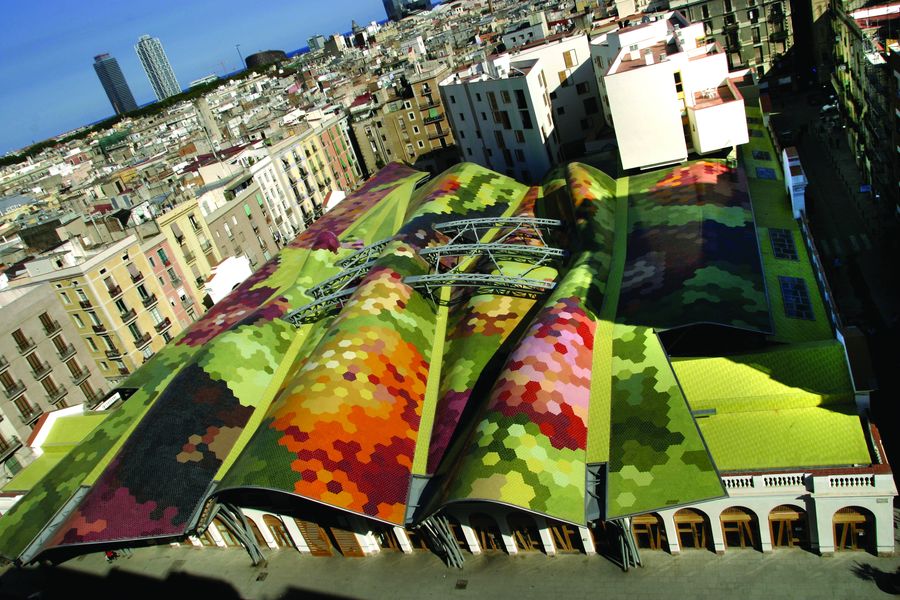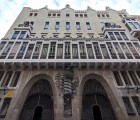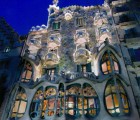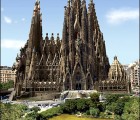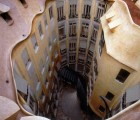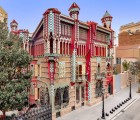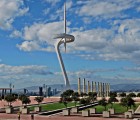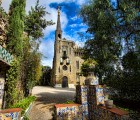Santa Caterina Market by Benedetta Tagliabue in Barcelona (Spain)
Building name: Santa Caterina Market
Architect: Benedetta Tagliabue
City: Barcelona
( Spain)
Spain)
The Santa Caterina Market, designed by the architect Benedetta Tagliabue and the studio Miralles Tagliabue EMBT, is a vibrant and modern market located in the heart of Barcelona, Spain. Here are some key details about the market and Tagliabue's design:
Renovation Project
The Santa Caterina Market is one of Barcelona's oldest markets, dating back to the 19th century. In 1997, it underwent a significant renovation project led by the architectural firm Miralles Tagliabue EMBT, with Benedetta Tagliabue as the lead architect. The aim of the project was to transform the traditional market into a contemporary and dynamic space while preserving its historical significance.
Colorful Roof
One of the most distinctive features of the Santa Caterina Market is its colorful undulating roof. Tagliabue's design introduced a stunning mosaic roof made of multicolored ceramic tiles. The tiles are arranged in a wave-like pattern, creating a dynamic and visually striking effect. The colors used in the roof are inspired by the fruits and vegetables sold in the market, adding a playful and lively touch to the building.
The Organic Form
The roof of the Santa Caterina Market is designed to resemble a flowing, organic form that contrasts with the more rigid and traditional architecture of the surrounding buildings. This design choice reflects Tagliabue's interest in creating buildings that blend harmoniously with their environment while also making a bold architectural statement.
Integration with the Neighborhood
The renovation of the Santa Caterina Market aimed to strengthen its connection with the neighborhood and the community. Tagliabue's design opened up the market to the surrounding streets, creating a more welcoming and accessible space. The colorful roof is visible from afar, acting as a beacon that draws visitors and locals alike to the market.
Modern Interior
Inside the market, Tagliabue introduced a modern and spacious interior that contrasts with the historical facade. The interior space is bright and airy, with large windows that allow natural light to flood the market halls. The layout is designed to optimize the flow of visitors and create a pleasant shopping experience.
Sustainability Features
The renovation of the Santa Caterina Market also incorporated sustainable design principles. The roof, besides being visually striking, serves a functional purpose by providing insulation and natural ventilation to the market halls. The ceramic tiles are also designed to reflect heat, helping to regulate the temperature inside the building.
Cultural and Historical References
While the Santa Caterina Market underwent a modern transformation, Tagliabue and her team were careful to preserve and highlight its historical elements. The original structure of the market, including its brick walls and arches, is still visible in certain areas. This blend of old and new creates a sense of continuity and celebrates the market's rich history.
Public Space
The Santa Caterina Market is not just a place to buy fresh produce and local goods—it also serves as a gathering space for the community. The plaza in front of the market often hosts events, performances, and cultural activities, making it a vibrant hub of social interaction.
Benedetta Tagliabue's design for the Santa Caterina Market in Barcelona is a successful blend of contemporary architecture, historical preservation, and community engagement. The colorful mosaic roof, organic form, modern interior, sustainability features, and integration with the neighborhood all contribute to making it a beloved and iconic landmark in the city. Tagliabue's vision for the market demonstrates her ability to create spaces that are not only functional but also beautiful, engaging, and culturally significant.
Visits of Santa Caterina Market
 | Av Francesc Cambó, 16
08003 Barcelona |
Nearest buildings:
-
Palau Güell (Barcelona)
-
Casa Batlló (Barcelona)
Casa Batlló, one of Barcelona's most famous landmarks, is an architectural masterpiece designed by the renowned Catalan architect Antoni Gaudí. Located on the Passeig de Gràcia, this building is a prime example of Gaudí's unique style and innovative approach to architecture. Here are some key details about Casa Batlló:
Architectural Style
Casa Batlló is a prime example of Modernisme, a Catalan version of Art Nouveau, which was a popular architectural style in Barcelona at the...

-
La Sagrada Família (Barcelona)
-
La Pedrera - Casa Milà (Barcelona)
La Pedrera, also known as Casa Milà, stands as an icon of Barcelona's architectural landscape and a masterpiece of Antoni Gaudí's genius. This extraordinary building, completed in 1912, is a UNESCO World Heritage Site and a symbol of the city's Modernisme movement. Here's a comprehensive look at La Pedrera, its history, architecture, and significance:
History and Context
Commissioned by Pere Milà i Camps and his wife, Roser Segimon i Artells, La Pedrera was intended to be a...

-
Torre Glories (Barcelona)
I'll cover the architecture of Torre Glòries, as they refer to the same building in Barcelona, Spain, designed by architect Jean Nouvel.
Torre Agbar / Torre Glòries:
Torre Agbar, later renamed Torre Glòries, is a striking skyscraper located in the Poblenou neighborhood of Barcelona, Spain. Designed by the renowned French architect Jean Nouvel, the tower was completed in 2005 and quickly became one of Barcelona's most iconic landmarks. Here are some details about its...

-
Casa Vicenc (Barcelona)
-
Montjuïc Communications Tower (Barcelona)
-
Colegio de las Teresianas (Barcelona)
-
Torre Bellesguard (Barcelona)
-
Cripta Gaudi (Barcelona)
